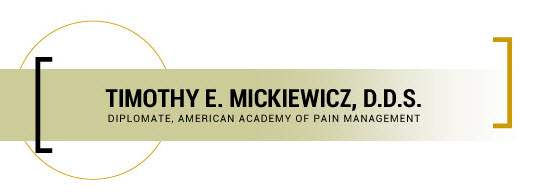
People with a protruding lower jaw or a receding lower jaw, often experience pain and insecurity. These lower jaw issues are usually the result of a congenital defect, injury, or genetic factors. If you’re ready to address lower jaw misalignment, orthognathic surgery could be the solution. Don’t let the word surgery scare you. Continue reading to learn more about the benefits, treatment process, and healing process of corrective jaw surgery.
Our Sacramento dentist, Dr. Timothy E. Mickiewicz and an oral surgery specialist will work together to repair your severe malocclusion through top-of-the-line dentistry and orthognathic surgery. To schedule an initial appointment with Dr. Mick, contact our office today at 916-469-9178.
Symptoms of Malocclusion
A misaligned lower jaw is usually noticeable to you as well as others. However, the malocclusion doesn’t just affect your appearance, it can cause other problems in your mouth and overall health as well. Indications that you need corrective jaw surgery include:
- Difficulty chewing
- Difficulty breathing
- Snoring
- Insecurity
- TMJ
- Worn teeth
- Dry mouth
- Sleep apnea
Without corrective surgery, you will likely suffer, or continue to suffer, from one or more of these various issues.
Benefits of Orthognathic Surgery
Although orthognathic surgery is a lengthy process, the outcome and benefits are well worth it. Surgically correcting your lower jaw greatly reduces your risk of experiencing the aforementioned symptoms. Realigning your jaw and teeth restores basic functions such as chewing, speaking, and breathing, and it positively affects your appearance and speech patterns.
Treatment Process
Both lower jaw protrusion and a receding lower jaw, also known as “weak jaw,” can be corrected by orthodontics when your teeth are the only problem. However, braces can’t change the size and position of your jaw. For those cases, orthognathic surgery is necessary.
During your first visit with Dr. Mick, he will:
- Use our advanced technology to examine your mouth and jaw
- Create your personalized treatment plan
- Share your x-rays, scans, and other diagnostic information with members of your treatment team
Typically, treatments occur in this order:
- Orthodontics: You will wear braces for a specific amount of time prior to surgery so your jaws properly fit after surgery.
- Surgery: An oral surgeon will use careful and appropriate measures to reshape and strengthen your jaw. This process usually takes a few hours to complete.
- Healing: Within one to three weeks, you should be able to return to work or school, but your initial healing timeline may require six weeks.
- Orthodontics: At the six-week mark, Dr. Mick will finish aligning your teeth with braces to make minor adjustments and ensure stability.
- Continue healing: Complete healing takes between eight and eleven more months and includes the removal of your braces.
This entire process can take up to a few years, but every step of the way you will experience tangible improvements. Keeping your mind on the end result, remembering how beneficial this surgery is, and working with a caring, organized, and experienced team will help you stay encouraged throughout your treatment.
Contact Your Sacramento Dentist Today
Orthognathic surgery is a long-term commitment, but it can change your life for the better. Take the first step by scheduling an appointment with Dr. Mick today. Call 916-469-9178.


